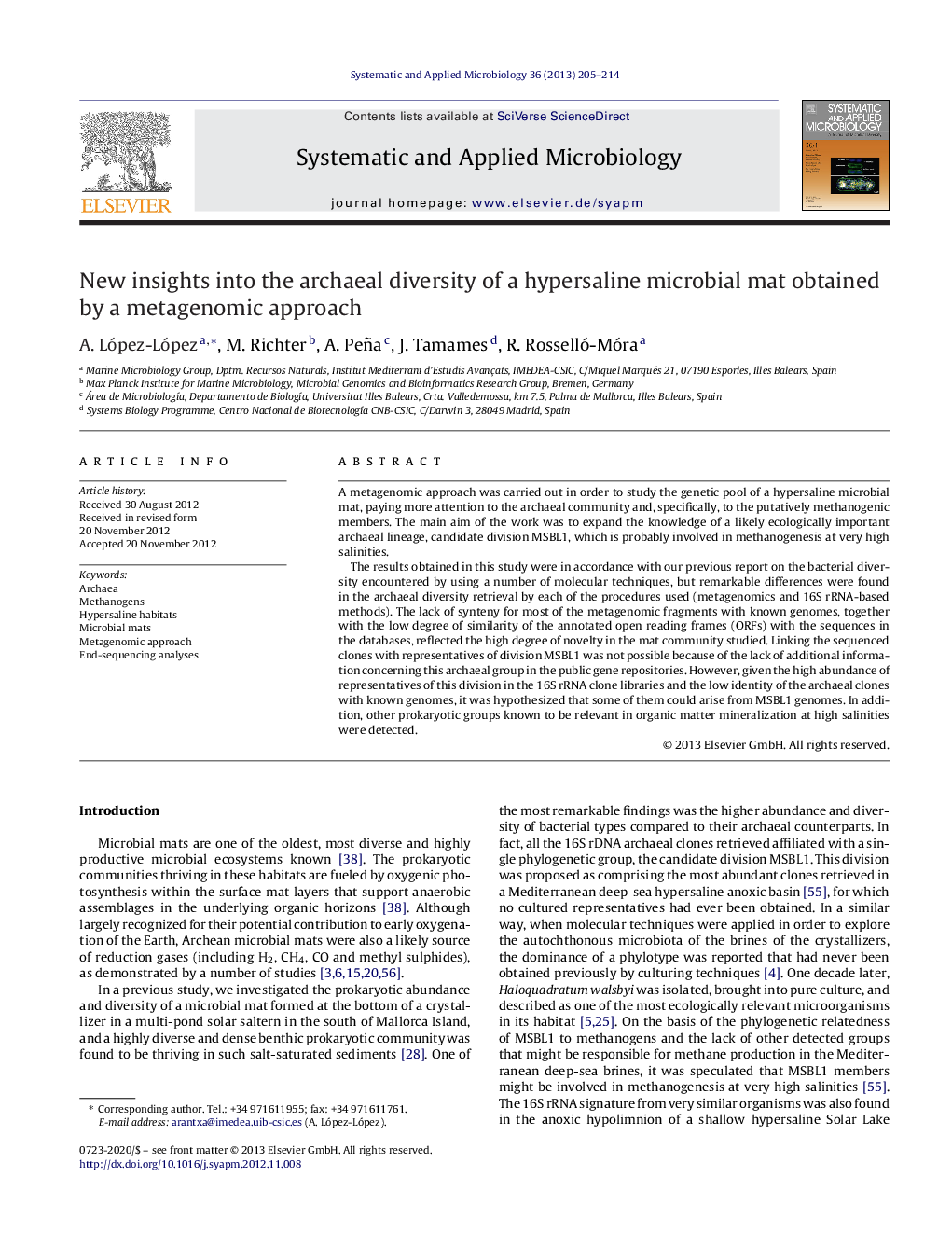| Article ID | Journal | Published Year | Pages | File Type |
|---|---|---|---|---|
| 2063802 | Systematic and Applied Microbiology | 2013 | 10 Pages |
A metagenomic approach was carried out in order to study the genetic pool of a hypersaline microbial mat, paying more attention to the archaeal community and, specifically, to the putatively methanogenic members. The main aim of the work was to expand the knowledge of a likely ecologically important archaeal lineage, candidate division MSBL1, which is probably involved in methanogenesis at very high salinities.The results obtained in this study were in accordance with our previous report on the bacterial diversity encountered by using a number of molecular techniques, but remarkable differences were found in the archaeal diversity retrieval by each of the procedures used (metagenomics and 16S rRNA-based methods). The lack of synteny for most of the metagenomic fragments with known genomes, together with the low degree of similarity of the annotated open reading frames (ORFs) with the sequences in the databases, reflected the high degree of novelty in the mat community studied. Linking the sequenced clones with representatives of division MSBL1 was not possible because of the lack of additional information concerning this archaeal group in the public gene repositories. However, given the high abundance of representatives of this division in the 16S rRNA clone libraries and the low identity of the archaeal clones with known genomes, it was hypothesized that some of them could arise from MSBL1 genomes. In addition, other prokaryotic groups known to be relevant in organic matter mineralization at high salinities were detected.
